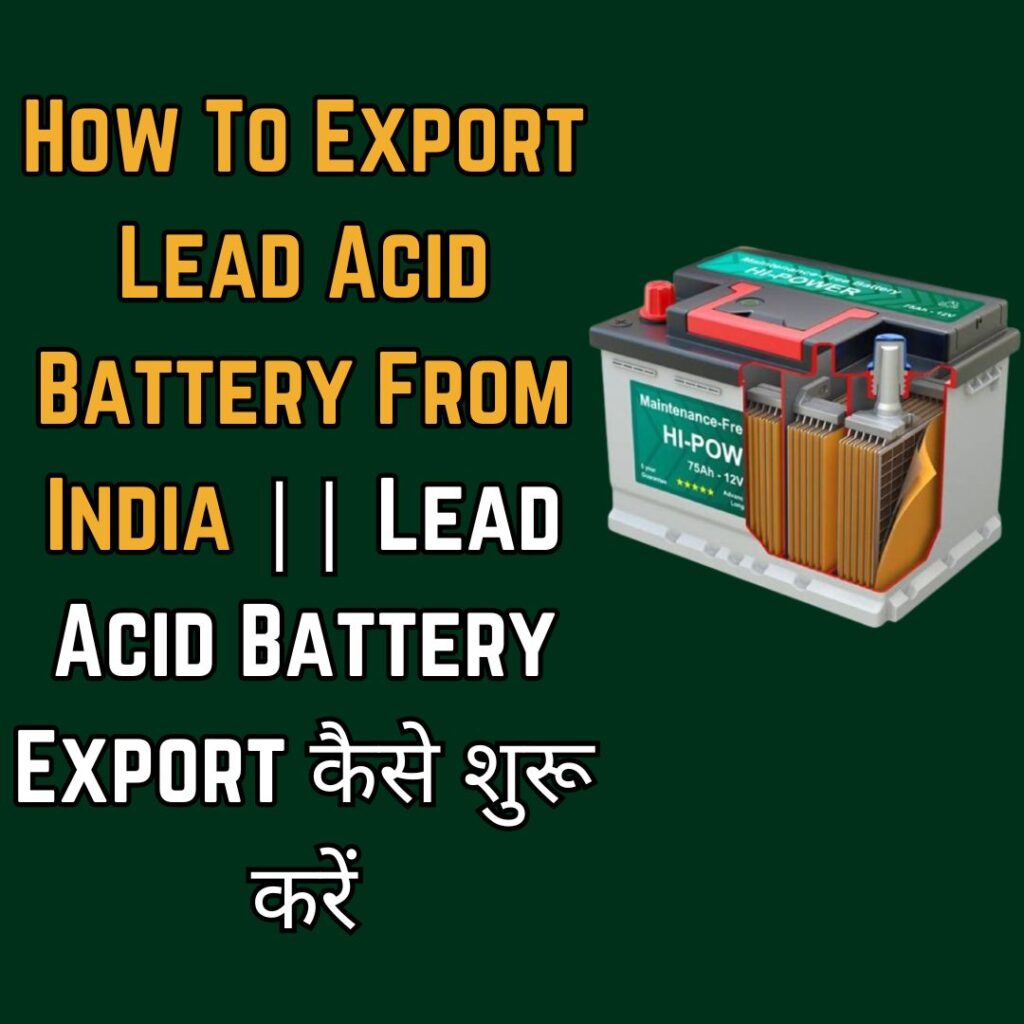Understand Regulations and Requirements:
Familiarize yourself with the export regulations for lead-acid batteries in India. You can check with the Directorate General of Foreign Trade (DGFT) or other relevant government agencies.
Ensure that lead-acid batteries are not prohibited or restricted for export to the specific country you intend to export to.
Obtain Necessary Licenses:
Check if you need any specific licenses or permits for exporting lead-acid batteries. Contact the relevant authorities, such as DGFT, for information on licensing requirements.
Compliance with International Standards:
Ensure that the lead-acid batteries meet international standards and certifications required by the importing country. This may include safety and environmental standards.
Packaging and Labeling:
Package the batteries securely to prevent damage during transit. Follow international packaging standards.
Label the packages with all required information, including product specifications, safety instructions, and handling precautions.
Customs Documentation:
Prepare all necessary customs documentation, including the commercial invoice, packing list, bill of lading, and any other documents required by the importing country.
Declaration of Goods:
Provide accurate and detailed information about the lead-acid batteries in the customs declaration form. Include details such as quantity, value, weight, and product specifications.
Shipping and Freight Forwarding:
Choose a reliable shipping method and freight forwarder. Ensure that they are experienced in handling hazardous materials if applicable to your batteries.
Incoterms and Terms of Sale:
Decide on the Incoterms (International Commercial Terms) that will govern the transaction. Clearly define the responsibilities of the buyer and seller regarding shipping, insurance, and customs clearance.
Customs Clearance at Destination:
Work with a customs broker at the destination port to facilitate the customs clearance process. Provide all required documents for smooth clearance.
Payment and Financial Transactions:
Agree on the terms of payment with the buyer. Ensure that financial transactions are secure and comply with international trade regulations.
Insurance:
Consider obtaining insurance coverage for the shipment to protect against loss or damage during transit.
Post-Shipment Follow-Up:
Keep track of the shipment and follow up with the buyer to ensure it reaches its destination safely. Address any issues that may arise during or after the shipment.
Always consult with professionals, such as customs brokers, freight forwarders, and legal advisors, to ensure compliance with specific regulations and smooth execution of the export process. Additionally, keep in mind that regulations may change, so staying informed is crucial.



